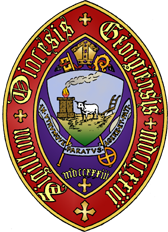In 1934, Bishop Frederick F. Reese was in his 26th year as Bishop of Georgia when he called for the election of a successor. At a special convention later that year, the delegates established the Bishop Coadjutor’s salary at $5,000 (which is $111,200 in 2022 dollars) and provided that Bishop Reese should have the use of “the Episcopal Residence” in Savannah “for the remaining years of his life free of expense and without any embarrassment.”
Three rectors and three bishops of missionary dioceses made the slate. Twelve ballots were taken without any one nominee receiving the required thirteen clerical and nine lay votes for a majority. Dr. Henry Phillips, Rector of Trinity in Columbus, South Carolina, led in the clergy balloting, while Dr. C.C.J. Carpenter of St. John’s in Savannah led in the lay order. Dr. Jimmy Lawrence of Calvary in Americus and the three bishops lagged in the voting. The Special Convention adjourned.
The special convention met again in January 1935 at St. Paul’s in Augusta with Phillips, Carpenter, and Lawrence nominated as a slate of three. In four ballots Dr. Phillips continued to lead with clergy and Dr. Carpenter favored by the laity. The convention dropped the bottom vote getter after the next ballot, which removed Dr. Lawrence from the slate. The sixth ballot revealed the same deadlock. The convention voted to remove Philips and Carpenter from further consideration.
 The convention approved a new slate with Dr. Lawrence back on the ballot with the bishops considered in the first special convention brought back for consideration: Missionary Bishop William P. Remington of Oregon, Missionary Bishop Elmer N. Schmuck of Wyoming, and Missionary Bishop Middleton Stuart Barnwell of Idaho. Bishop Barnwell’s name led the votes in each order without getting a majority. On the ninth ballot, the convention elected Bishop Barnwell as Bishop Coadjutor.
The convention approved a new slate with Dr. Lawrence back on the ballot with the bishops considered in the first special convention brought back for consideration: Missionary Bishop William P. Remington of Oregon, Missionary Bishop Elmer N. Schmuck of Wyoming, and Missionary Bishop Middleton Stuart Barnwell of Idaho. Bishop Barnwell’s name led the votes in each order without getting a majority. On the ninth ballot, the convention elected Bishop Barnwell as Bishop Coadjutor.
A relation of Georgia’s first bishop, Middleton Stuart Barnwell was born in Louisville, Kentucky, in 1882. He earned his Bachelors in Divinity from Virginia Theological Seminary. Barnwell served as an assistant rector in Baltimore before becoming the rector of St. Andrew’s Church in New Bedford, Massachusetts. While there, he married Margaret Thorne Lighthall (1889-1960).
Barnwell worked at the Church of the Advent in Birmingham, Alabama, from 1913-1923. He then became field secretary to the Protestant Episcopal Church before being consecrated Bishop of Idaho in 1925. During the late 1920s and early 30s, Barnwell ran St. Margaret’s School, a secondary girls academy in Boise, Idaho. He advocated that the academy become a junior college so that local high school graduates could begin their college education without out-of-state costs and he secured funding from The Episcopal Church. Bishop Barnwell served as the college president for Boise Junior College from 1932 until 1934. The college grew to become Boise State University.
Barnwell had served as Missionary Bishop of Idaho for nearly a decade when the call for a bishop coadjutor went out from the Diocese of Georgia. At the time of his 1935 election as Bishop of Georgia, there were 16 parishes, 21 organized missions, 13 unorganized missions, five mission stations and one parochial mission. The segregated church records noted 5,391 white and 1,029 black communicants.
Pictured: Bishop Middleton Stuart Barnwell. Photo courtesy Boise State University Library.
